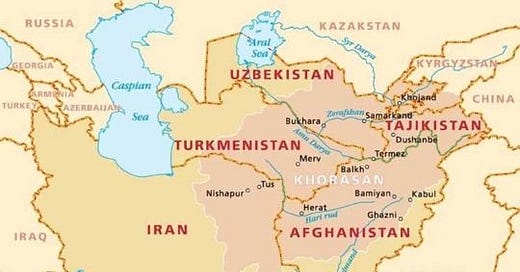This is part 2 of the Creed & Power series. Here are the links to Part 1 and Part 3. Part 1 discusses the Christian influences on the origination of the creed debates. Part 3 explains the present day dominance of the Asharite creed.
At this point of my life, I am disinterested in debates related to Islamic creed. When I found out the origins of the debate, I found out all I wanted to know. So I am going to keep this short.
Kings and generals, also faith
During 1000 to 1100 CE, Nishapur was the meeting place of Islamic intellectual thought. Several famous ulema came from here. In this city, there were Muatizilites, Karramis, Hanbalis, Karramis, and Ismailis. And the Ismailis were different from today’s heretic Ismailis. It would take another century for Ismailis to depart completely from mainstream Islamic theology.
At this point, the Ghazvanid are in power, with a weak Abbasid central government in Baghdad. Meanwhile the Fatimid Shia rule over North Africa.
In the Muslim world, there were three leading creeds competing for influence. Hanbalites, Asharites, and Karrami. The Ghazvanid have given official endorsement to the Karrami sect. Their fiqh is similar to Hanafi fiqh but their creed is different. They were the dominant school of thought in Khorasan for hundreds of years. By 1400, Karramis had completely vanished from the Muslim world. In today’s world, they have no adherents.
So what was the Karrami creed? No one really knows. Why? Today, the Karrami thinking does not exist. Not even their original writings are preserved. All we know is they used to believe “Allah has a physical body, which is different from human body”. Disclaimer: It’s a bizarre view to say the least. No current major Muslim school of thought believes this.
The Karrami thinking was founded by Ibn Karram in the 800s CE. He was a fiery preacher who spread fabricated hadith. He was in Nishapur, before he was forced to leave to Jerusalem where he died.
But his followers would rise with time and through the Ghaznavid endorsement. Mahmoud Ghanavid later left Karami theology, but the theology remained popular in the land. The Karramis were so powerful, they were poisoning opposing scholars!
When the Seljuks took over Ghaznavid lands, the Seljuks didn’t care about the creed. They asked around, and they chose Mansur Al-Khunduri. Al-Khunduri was a fanatic. A hard-core nut job. And a bigot.
In 1053 CE, Al-Khunduri starts doing mass purges of Asharites. He kicked the Asharites out of government and out of masjid leadership. He imprisoned, he lashed, and he killed. This lasted for four to five years.
This persecution was a huge problem for the Asharites. A vast majority of people who followed Asharite creed were in Nishapur. There was not many good places to run. Remember, the Fatimid ruled North Africa, and Baghdad was predominantly Hanbalites. Some scholars fled to Makkah.
These poor conditions led to an Asharite militia marching to Nishapur. They attacked the walls of the city. They demanded the freedom of a famous Asharite scholar. Total chaos that annoyed the Seljuk sultan.
And Alp Arsalan’s rise to power as the Seljuk Sultan meant an end to Al-Khunduri’s rule. He had a personal vendetta from many years ago, and he had Al-Khunduri tortured to death. Alp Arsalan appointed Nizam-ul-Muk — who believed in the Asharite creed. The tide turned completely.
Legacy of Karrami
Politics and religion go hand in hand. The Karramis disappeared from the Earth when they lost the sponsorship of their rulers. Some aspects of their legacy live on.
Ironically, the Karrami persecution gave rise to a strong backlash that led to the rise of the Asharites. Since then, the Asharite creed has dominated Islamic history.
The Karramis were the first to make distinctions between Asharites and Hanbalites. There is substantial evidence that Al-Khunduri’s persecution wasn’t directed towards Hanbalites, just the Asharites. Its not that Karramis loved Hanbalites. The Karramis didn’t let the Hanbalites give khutbahs or lead salat, but the Hanbalites were allowed to continue teaching their creed among themselves. They weren’t jailed like Asharites.
At this point in history (in the 11th century), the Asharites and Hanbalites viewed their creeds as part of the same spectrum. They both considered each other as part of Ahl-us-Sunnah. By the time of Ibn Taymiyyah — within 200 to 300 years — the Asharites and Hanbalites would view themselves as different from each other.
Imam Bayhaqi is perhaps the most famous Asharite scholar of the time period. Although he didn’t live in Nishapur, he used his influence to lobby for the freedom of other Asharite scholars.
References



